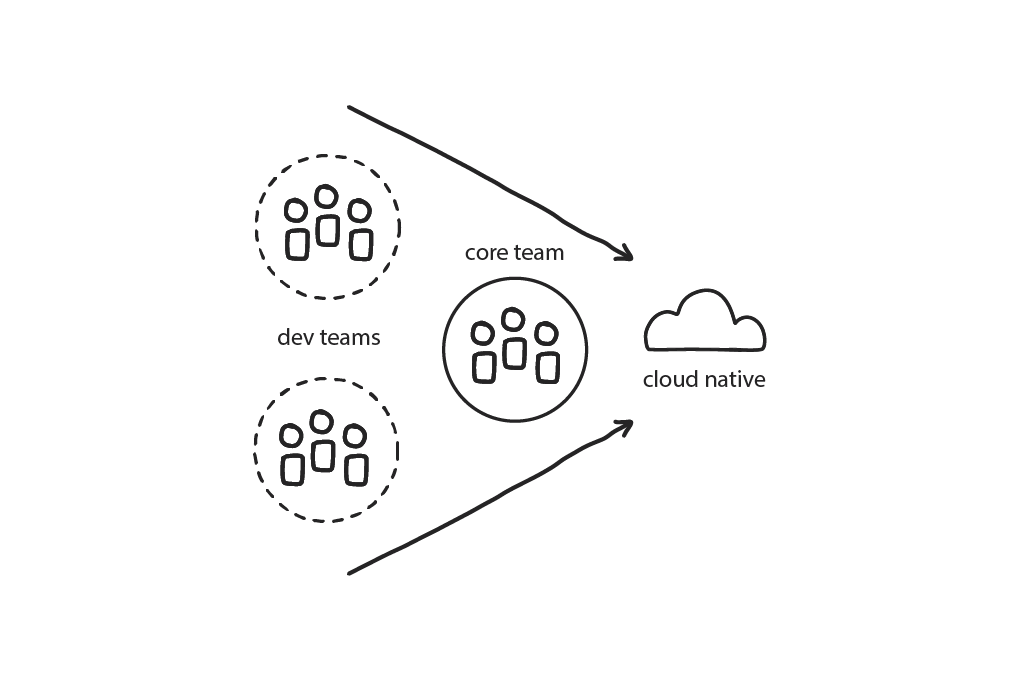Pattern: Core Team
Dedicate a team of engineers and architects to the task of uncovering the best transformation path and implementing it along the way. This reduces risk embedded in the transformation while the team gains experience helpful for onboarding the remaining teams later
With Vision First in place, the company is now allocating resources to the cloud native transformation and choosing the best teams for leading the initial stages.
In This Context
Making an existing team or teams responsible for delivering the new cloud native system while still requiring them to work on their regular duties means they will have conflicting priorities—and struggle to deliver either of them at all, much less do it well.This happens very commonly when companies fail to recognize the size and scope ofa cloud native transformation—both the time and resources it will require and the many ways it will impact the organization. Instead, they treat it like another system upgrade added to the backlog of standard tasks. This leads to insufficient resource allocation to the cloud native transformation project and conflicting priorities for the engineers working on it and will almost certainly cause the initiative to stall or simply fail.
- Teams working on both urgent and important tasks will tend to prioritize urgent tasks first, leading to deprioritization of important tasks such as cloud native transformation.
- Cloud native technologies are new and complex. They require intense time investment for learning and experimentation.
- Some of the cloud native challenges are too difficult for one person to handle.
- A team responsible (and trusted) for delivering a new solution will have full commitment to the solution and later evangelize about it across the organization.
Therefore
Create a single Core Team of five to eight engineers and architects to lead the transformation.- Team responsibilities will include ownership of the technical vision and architecture and derisking the transformation by running a series of experiments to uncover the best transformation path.
- Later, the Core Team can use its experience to onboard other teams to the new way of working and to create the Dev Starter Pack materials.
- The team may continue improving the platform after the major parts of the transformation are done.
Consequently
The Core Team rapidly works through the most challenging parts of the transformation(identifying the best migration path, tools and technologies, and then implementing a minimum viable product version of a platform) and paves the way for the rest of the teams in the company toward successful cloud native adoption.
- The team is building knowledge and experience in the cloud native area.
- It can use this growing knowledge to adjust the vision and the architecture ofthe applications as it goes.
- Progress is visible and measurable.
